The Fall of Assad in Syria - For Israel, Will Short-Term Gain Lead to Long Term Pain or Not?
December 9 , 2024 - Issue #66
Thank you to all my subscribers and followers. You honor me with your presence. If you think this article of value, please share it with others. Please also consider indicating if you see value in the article by “liking” it or adding a comment. Doing so helps me determine the subject of future articles that you might find beneficial and, through social media, broadcasts my work to a wider audience.
The day the U.S. and France announced the ceasefire deal between Israel and Hezbollah, rebels in northern Syria—seeing Hezbollah defanged, Russia’s distraction in Ukraine, and the weakening of Iran—identified an opportunity and pounced. Once confined to enclaves in northern Syria after Assad’s regime won the first Syrian Civil War with the help of Hezbollah, Russia, and Iran—two rebel groups, soon joined by others, struck with a determination that crushed Syria’s dispirited military that was unwilling to fight back.
Many reports credit Turkey’s President Recep Erdogan with spurring the rebels on, arguing that he did so for several reasons. First, he wanted to send back to northern Syria the 3.5 million Syrian refugees that crossed into Turkey after the first Syrian Civil War began. Second, Erdogan wanted to weaken the Kurds—both those that live in Turkey and more importantly for this analysis, the Kurdish enclave in Syria. To this end, years ago Turkey occupied part of Syria along with its SNA (see below) allies, to weaken Kurds in the region. And quite possibly, it is my belief that Erdogan has dreams of something more—expanding Turkey’s influence in the region—perhaps creating along the way a new manifestation of something old, the Ottoman Empire.
Once the ball got rolling, there was little to stop it. Iran evacuated its diplomatic staff and military officers from Damascus and withdrew Shiite militia personnel through Iraq. Russia initially used airstrikes to engage the rebels, but they were ineffectual. And Hezbollah sent a small group of “advisors” to assist the Syrian army but soon withdrew them. All made the same calculation in their present weakened and distracted state, if the Syrian army won’t fight why should they?
Seeing the writing on the wall and knowing that after killing a half-million Syrian civilians with all manner of weapons, including chemical ones, that he would not stand a chance of surviving capture, Bashar Assad first sent his family out of Syria and then he fled to Russia. With his departure, the fifty-three-year brutal era of Assad family control of Syria that started with Bashar’s father, Hafez Assad in 1971, was over.
What the future will bring for Syria—a return to the countless coups that preceded Hafez Assad’s rise in 1971 or something more permanent—is hard to know. Will it be a Jihadi state or something more moderate? Also hard to know—although the initial statements of HTS’ leader are promising regarding a peaceful transfer of power that respects all the Syrian people (but so was the Taliban’s higher-minded oratory after Afghanistan collapsed that did not last long in practice)—is whether the rebel victory will lead to a draconian Islamic state. Nor do we yet have a clue as to how the rebels will view Israel going forward since none of the rebel groups have had a word to say about that subject.
We shall see.
This essay focuses on who the rebels are, who backs them, how Israel has responded, and the potential impact on Israel in the short and long terms.
Who are the Rebels?
The rebels are mainly composed of four groups that each have multiple subgroups. Making things more complicated, each group and the subgroups within them have different goals, allegiances, and outside supporters—making for a possible wild ride ahead.
For now, the most important group, and the one that initiated the action on November 27, is called Hay’at Tahrir al-Sham, or HTS for short. Their attack got the ball rolling, first taking Aleppo, then Hama and Homs (which cut-off the Assad regime from its Alawite power base in Latakia along the Mediterranean and jeopardized the security of two Russian bases there) before reaching Damascus little more than a week later. HTS is a Sunni Islamist organization led by Abu Mohammad al-Jolani, that for years operated as Jabhat al-Nusra, which was a branch of Al-Qaeda during the Syrian Civil War. But in 2016, Al-Jolani broke off from Al-Qaeda to start a new organization that morphed a year later into HTS, which is an umbrella group for many smaller entities, most but not all of whom, that are fundamental (Salafi) religious Islamic entities.
Al-Jolani’s roots are instructive and his history impressive. Born in 1982 in Saudi Arabia, at age seven he and his family moved to a well-to-do district of Damascus. Now forty-two years old, al-Jolani claims that his nom de guerre (his original name was Ahmed al-Shara that there arfe some indications he may return to) is a reference to his family roots in the Golan Heights that he claims ended when his grandfather was forced to leave his home after Israel took the Golan Heights during the Six-Day War in 1967. After 9/11 and the American take down of Hussein’s Iraq, a radicalized Al-Jolani went to Iraq to fight for the Jihadis there. There, he came under the sway of the infamous Abu Mus’ab al-Zarqawi, the leader of Al-Qaeda in Iraq, who was a founding member of the Islamic State that eventually morphed into ISIS. Captured, the U.S. imprisoned al-Jolani for five years in a jail which was a hotbed for Jihadi radicalization. After his release, al-Jolani returned to Syria where he established Jabhat al-Nusra, an organization that aggressively participated in the fight against Bashar Assad during the first Syrian Civil War, and affiliated it with Al-Qaeda. But also, Jabhat al-Nusra received some benefit from moderate IDF policies that provided medical care to Syrian civilians and some al-Nusra fighters near the Syrian border with Israel that were injured while confronting the Syrians. Meanwhile, viewing al-Jolani a terrorist, the United States put out a ten-million-dollar bounty for information leading to his arrest. But after years of fighting the Syrians and their allies, al-Jolani broke with al-Qaeda in 2016 and eventually put together HTS. Since then, in the small area they controlled, HTS did not interfere with Christian religious practices (the bounty still stands). Nevertheless, HTS is an Islamic organization, supported to some degree by Turkey, but also self-funded, and certainly not Zionist.
Another group operating out of northern Syria, and acting in current concert with HTS, is the Syrian National Army (SNA). The SNA is another umbrella group, heavily supported and influenced by Turkey. That support includes training and armaments as well as political and financial help. In the past, at Turkey’s behest, the SNA has fought against Kurdish groups, forcing many Kurds to leave the region. Estimates are that the SNA has many tens of thousands of fighters but there are significant frictions between the subgroups that these fighters owe their allegiance too.
Yet another rebel coalition in Syria called the Syrian Democratic Forces (SDF) is comprised of many Kurds and some other Arabs and other minority groups. It is dominated by the YPG, which is a Kurdish militia that has fifty thousand fighters, is supported by the United States, and has waged war with ISIS. Also in this coalition is the YPJ, which is composed of female fighters that also fought valiantly against ISIS. After HTS and the SNA began their march, the United States pushed the SDF to expand the regions under its control, mostly in northwestern Syria, mainly to deny ISIS elements of the possibility of benefiting from the vacuum caused by the collapse of Syria’s army. A tangential benefit of this, is that by doing so the SDF will further disrupt Iran’s transportation pipeline for trucking new armaments to Hezbollah by way of Iraq and then Syria.
And then there is the Southern Operation Command. It contains mostly Sunni and Druze groupings that have sprung up in southern Syria but after the end of the last Civil War allied themselves with Assad’s forces. Over the last few days, they have taken control of much of the southern part of Syria, including the border with Israel along the Golan Heights. Also present along the Golan are Jihadi elements that once fought as members of al-Nusra (the predecessor of HTS), ISIS, and other groups. But many in the Southern Operation Command once received assistance through Israel’s “Good Neighbor” policy between 2016-1018 during the latter stages of the Syrian Civil War. Therefore, it is now difficult to determine what path the Southern Operation Command will take but one can be hopeful even though caution is the order of the day.
Israel’s Response
Both Israel’s military Chief of Staff and Prime Minister Netanyahu have visited the Golan Heights to emphasize Israeli policy going forward. IDF priorities and actions for now are:
Monitoring Iran’s withdrawal from the region and determine what any remaining elements might do.
Calling up additional forces for defense of the Golan that have the capability to intervene with limited offensive thrusts as required. Just as along Gaza and the Lebanese border, the IDF will ensure that going forward it will have a strong presence easily able to deal with the capability of those on the other side of the border rather than having its local strength dependent on assessment of intent.
The IDF took over the Syrian military observation base on Mount Hermon, which is crucial for intelligence observation and defense and is from where the Syrians attacked and overran the IDF installation on the same mountain in 1973.
Seeing the Syrian army abandon its positions, the IDF temporarily moved into the buffer area between Israel and Syria which has been in existence since 1974 as part of the ceasefire agreement negotiated after the Yom Kippur War in 1973. This happened days after the IDF forces rescued a trapped UN force under attack from unnamed rebel forces. Israel has made clear that this is a temporary measure taken until what will come becomes clearer. Defense Minister Katz said that in the buffer zone the IDF will remove any “heavy strategic weapons and terror infrastructure.” The IDF will also deny terrorist groups the opportunity to establish themselves in the buffer zone (similar to what the U.S. has asked of the SDF). Also, the IDF is quickly building new fence line fortifications along the border that will include deep trenches to prevent the rapid movement into Israel of terrorist operated vehicles like what Hamas did out of Gaza.
Identifying the presence of, and eliminating, any Syrian strategic arms that rebel forces might otherwise get their hands on. To that end, the IDF carried out an estimated 100 airstrikes inside Syria that successfully destroyed chemical weapons held onto illegally and covertly by Assad; destroyed remaining chemical weapon manufacturing capability in Syria; and destroyed Syrian precision guided missiles and other rockets.
Continuing to weaken Hezbollah and interfering with its rearmament. To that end, Israel’s air force has hit crossing points used by Hezbollah and/or Uran between Syria and Lebanon, has destroyed Hezbollah linked installations in Syria, and according to one report, a raked over a Hezbollah convoy of up to 100 vehicles with Hezbollah fighters and armaments winding its way back to Lebanon from Syria.
Otherwise, Israel will stay out of the struggle in Syria as long as its interests are not “directly or immediately threatened.” One commentator reminded of an old Yitzhak Shamir saying (an Israeli Prime Minister decades ago) that when two Israeli antagonists fight each other that Israel can “wish both sides success.”
The Short-Term Impact on Israel
Even though some western and Arab powers had been in negotiation with Assad to break with Iran (he by no means was jumping to work a deal), the fall of Assad could be good for the Syrian people and removes an important player that for years has furthered Iran’s ambition to destroy Israel. As such, Assad’s removal makes it much more difficult for Iran to reconstitute its Axis of Resistance. With Hamas rendered toothless and Hezbollah weakened, Iran needed Syria—not just for safe passage to rearm Hezbollah—but also to engage more heavily with the Jewish State on an alternate front, the Golan Heights.
Some find the significance of the rebel victory so grand that they are likening it to the fall of the Berlin Wall. I’m not so confident. We are still early in the game. Already, Iran has issued conciliatory statements directed towards HTS and likely the SNA in hopes of reversing the collapse of its strategic plan for destroying Israel. And Russia has still not spoken to any great degree, but I suspect we have not heard the last of Putin in this region. That is because Russia’s naval port in Syria, at Tartus, and its airbase close by are important for furthering its objectives. From there, Russia has the capability to:
Influence events in the Middle East.
resupply and revitalize its Mediterranean fleet as needed; and
Support mercenaries in Libya and the Central Africa Republic and the Sudan as required.
Located in the far eastern Mediterranean, the base is also comfortably far from NATO naval bases. In short, it allows Russia to punch above its weight. Therefore, Russia has much physically to lose, as well as the prestige loss of its fifty-year presence in Syria, should it be required to evacuate. But so far, rebel forces have shown no inclination to force the Russians out. Even so, some Russian naval ships have left Tartus for the safety of the high seas.
Still, the regional strategic environment has changed, much in the early days to Israel’s benefit. The end of Assad’s rule breaks the chain with which Iran sought to strangle Israel. As such it is an event of monumental proportions—both strategically and tactically. Now, Iran no longer has a direct, uncompromised path for supplying Hezbollah and Israel does not have to worry, for the moment, about Iran placing Shiite militia on its border with Syria. Nor need Israel concern itself with what once was Syria’s large army, disillusioned as it may have been, and its vast quantity of strategic arms. Say what one wants about the rebel forces, at best they only comprise 100,000 fighters mostly armed with personal l weapons. For now, they are not an army that can threaten Israel, and especially if the IDF has been successful, they do not possess the strategic weapons needed to do so. Furthermore, given the numerous groups and subgroups with different agendas, backers, and religious philosophies—consolidation of rebel power in Syria in a manner that would allow the winner to look outwards at Israel rather than inwards at its domestic competitors, will likely take some time. Thus, whatever nefarious intent to do Israel harm that may lay nestled in the hearts of the rebels, their capability to do so in the short term is far less than what Israel faced along the Syrian border less than a month ago. I consider that a good thing.
The Long-Term Impact on Israel
This is where things get a little bit hazy. Below is a list of my concerns:
Will the Golan Heights be a rallying cry for Syria’s new rulers? The name Al-Jolani took when he radicalized twenty years ago suggests that the Heights might remain on his mind. If so, the Golan front could suck in Jihadis from all over the Sunni world. Recognizing this, Israel has reportedly sent messages to HTS and other rebels saying that we don’t want to fight you but will if necessary, and don’t make the Golan Heights an issue. Nevertheless, the Golan could provide an opening that Iran could leverage. Iran’s relationship with Hamas proves that Iran’s Shiite leaders are fully capable of overcoming any antipathy caused by their religious differences with Sunnis.
A clear winner so far is Turkey. Erdogan, despite multiple rounds of economic cooperation over the years, has show great eagerness to confront Israel rhetorically whenever Israel’s policies conflict with his affinity for Sunni terrorists and Palestinian causes. Should Erdogan maintain the same influence he now has over Syria’s northern rebel groups with any new Syrian government, then Erdogan will have the physical means to pressure Israel by supporting Syrian military efforts opposite the Golan Heights. Also, Erdogan’s involvement sets up a direct confrontation between the SNA supported by Turkey, HTS’ avowed independence, the Kurds that are the lion share of the U.S. supported SDF, and the unknown proclivities of the Southern Operation Command. How that conflict will resolve and what role Israel choses to play, if any, could have significant impact on Syria’s stability, HTS’s and SNF’s view of Israel, and give rise if division and infighting causes weakness to an opportunity for an ISIS, now mostly held in check by the Kurds to return. That would not be good for Israel.
Iran and Turkey could reach an accommodation with the glue being confronting Israel.
Syria might remain fragmented for a long period of time. While this could be good for Israel, it could also might give rise to regions harboring terrorist forces bent on Israel’s destruction that use ending the Jewish State and/or recovering the Golan Heights as a rallying cry. Such a mosaic of forces bent on each other’s destruction could also destabilize Jordan whose now peaceful border with Israel is important for Israel’s security.
The incoming Trump administration could decide to pull out the 900 American soldiers now in western Syria which would then strengthen Iran’s and Turkey’s hands to the detriment of the Kurds and Israel.
Will the new Syria or a fragmented one, especially if American forces are removed, allow Iran to send armaments to Hezbollah through the traditional trucking routes it had been using and by way of Syrian airports?
Might a desperate Iran, seeing the collapse of the allies it propped up to deter Israel from destroying Iran’s nuclear program, now go for broke before its geopolitical situation further worsens to build out its nuclear capability?
In the end, where the action in Syria leads will be determined by the intersection of interests of Iran, Turkey, and Israel but also colored by Russian concerns and American influence. Because it is too soon, I make no definitive predictions. However, I do believe the upheaval provides opportunity. With all that has happened since October 7, there is now a chance for something better than before. Iran’s strategy has collapsed and Israel’s credibility as a strategic power is enhanced. While there are plenty of political storms on the horizon, the weather is never permanently clear. I think Israel will get through the clouds to find some sun.
One opportunity that sun may germinate, is for Israel to now attack Iran’s nuclear program. I can think of no better time to extract this thorn in the side of Israel and moderate Arab nations in the Middle East than when Israel is not significantly distracted by other combatants, Iran’s defenses are down and its economy isolated, and an incoming American administration might well support such a move or at worst just avert its eyes. Thus, for the first time, the cost of doing so today is much less than the cost of what Israel might otherwise face in the future. And, it could be the straw that breaks the Ayatollahs’ backs—and leads to their downfall.
Victory goes to those that seize the moment. Defeat is dealt to those that dither. There may never be a better opportunity than today. That’s not a prediction—just an observation.
Also, if you have an interest in the danger Hezbollah presents and how it came to be, you might consider purchasing my book which can be obtained on Amazon here.

MK Gadi Eisenkot Reflects on War, Leadership, and Family Tragedy - Interview—Written by Ben Caspit for the Jerusalem Post—December 7, 2024
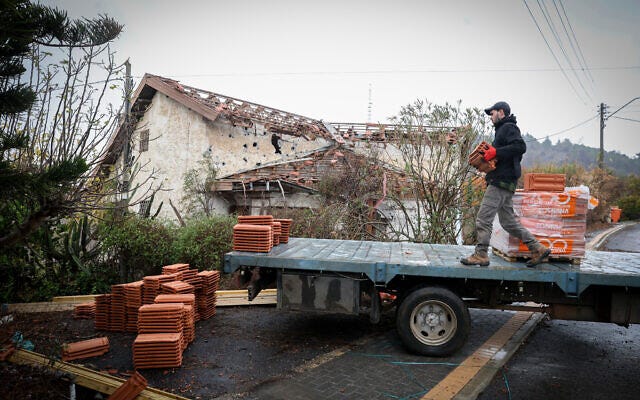
IDF Northern Command Chief Says Rebuilding Can Begin in Damaged Border Communities—Written by Emanuel Fabian and Times of Israel Staff, etc. for the Times of Israel—November 29, 2024

Doing What is Needed: 'Post' Reporter on Battling Hamas Face-To-Face in Gaza—Written by Michael Starr for the Jerusalem Post—December 5, 2024
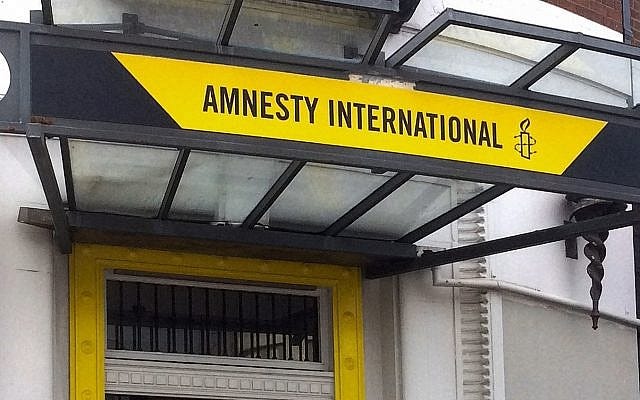
Amnesty Israel Rejects Parent Group’s Report Accusing Israel of Genocide in Gaza—Live Update Times of Israel—December 5, 2024
How Amnesty International Became a Joke | Opinion—Written by Arsen Ostrovsky and John Spencer for Newsweek—December 5, 2024
Everything You Know About Israeli Settlements is Wrong.—Written by Nachum Kaplan for Future of Jewish—December 7, 2024
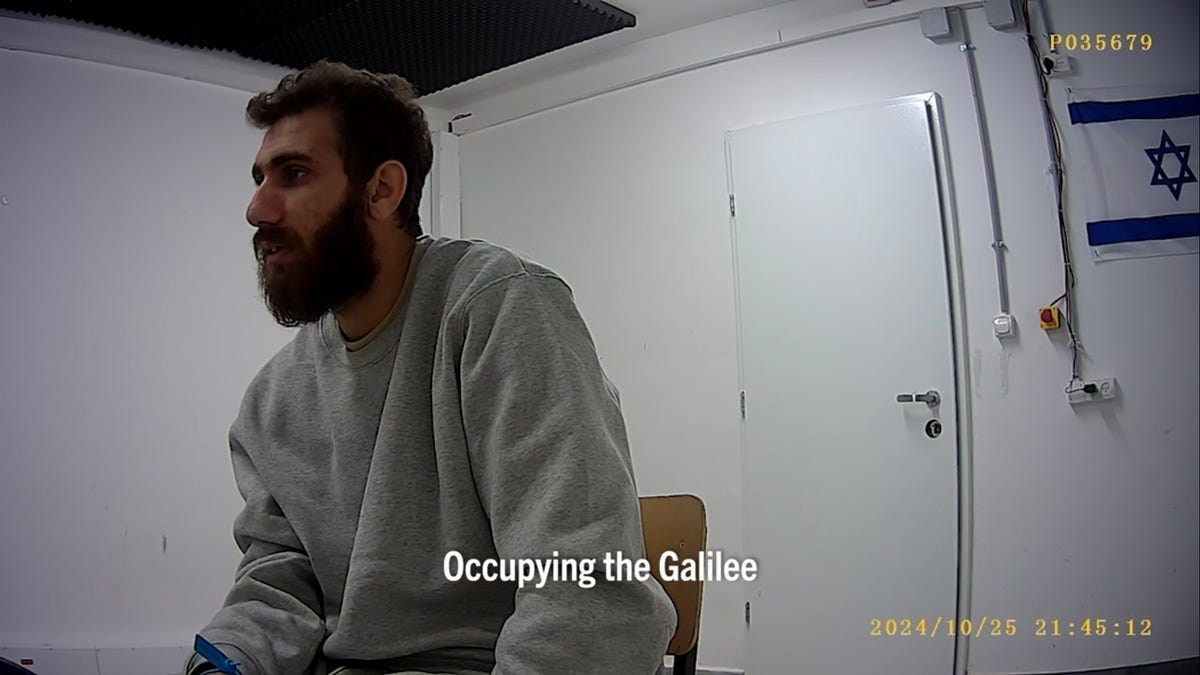
Exclusive: A Look at Hezbollah's Plan to Terrorize and Invade Northern Israel—By Benjamin Weinthal for Fox News—December 4, 2024
What Happened to the Shin Bet on Oct. 7?—Written by Itai Ilnai for the Jewish News Syndicate—December 6, 2024
Qatar’s AJ+ Used Bots to Amplify Anti-Israel Discourse, New Report Finds—Written by Ohad Merlin for the Jerusalem Post—December 5, 2024
Iranian Plane Suspected of Ferrying Arms to Hezbollah Blocked by IAF Over Syria Overnight—Written by Emanuel Fabian for Times of Israel—December 1, 2024
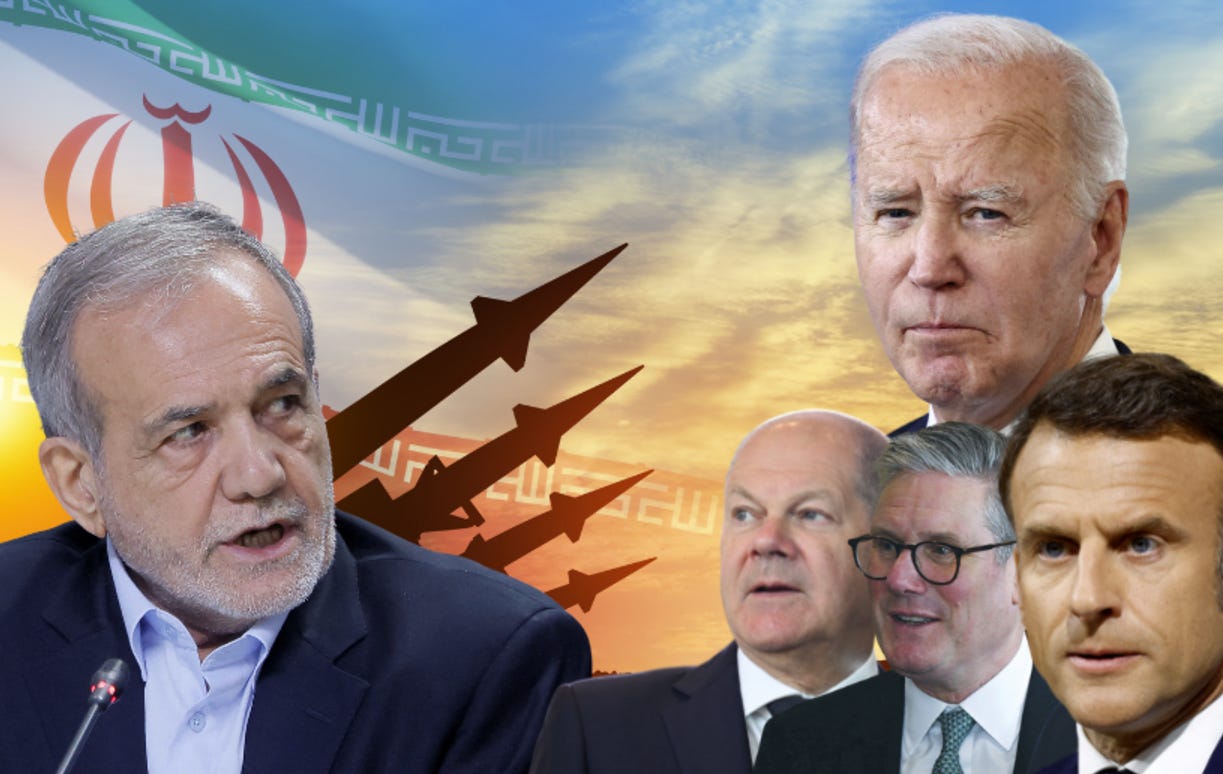
Where Does Iran Nuke Threat Stand Post-IAEA Rebuke, Israel attack, Trump Win? - Analysis—Written by Yonah Jeremy Rob for the Jerusalem Post—December 2, 2024
‘Entrenched Anti-Israeli Bias Has Been Laid Bare’: UNGA Passes Three Resolutions Targeting Israel—Flash Brief for The Foundation for Defense of Democracies—December 4, 2024
The International Criminal Court’s Folly—Written by Eugene Kontorovich for the Atlantic—November 27, 2024
Israel’s Struggle with Hezbollah—A War Without End is now available in eBook and hardback format on Amazon and IngramSpark. This compelling narrative explores Hezbollah’s origins and cancerous growth, traces Israel’s response, and reveals Israel’s present readiness to meet Hezbollah’s challenge.
Cliff Sobin
Important Link—Alma Research and Education Center: Understanding the Security Challenges on Israel’s Northern Border





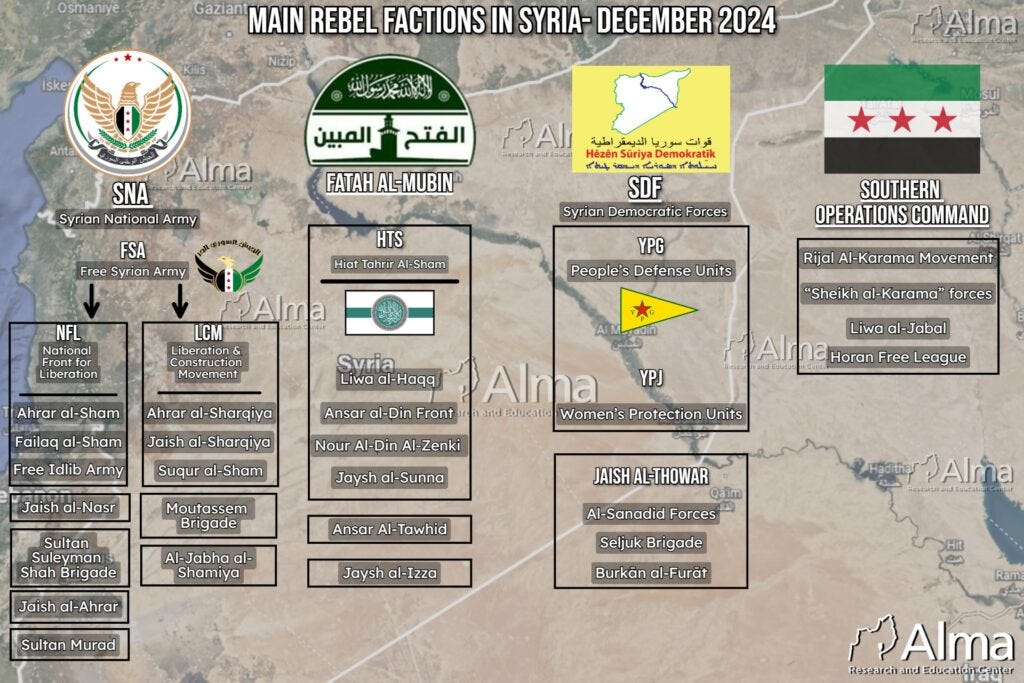

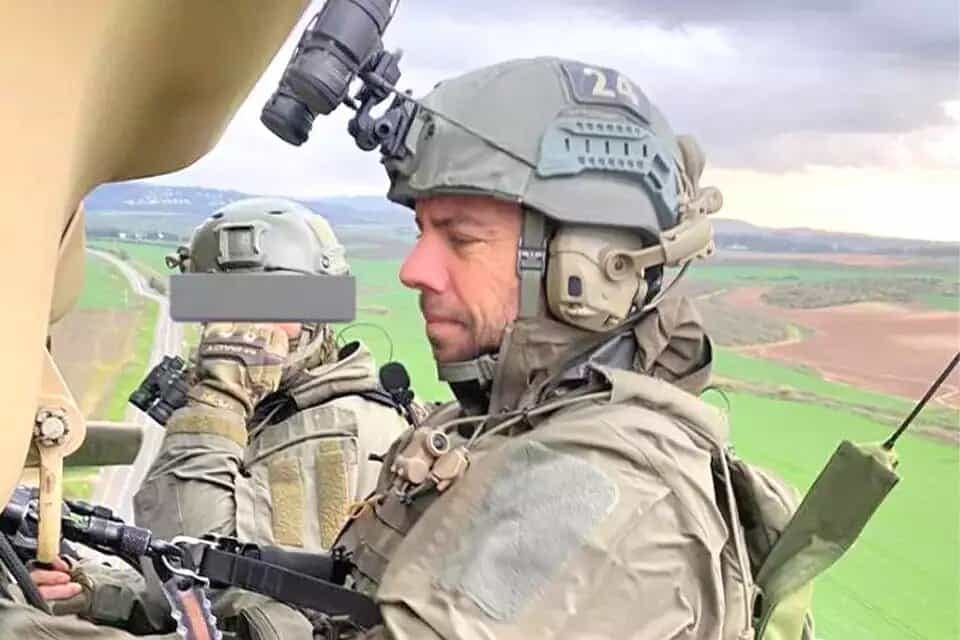
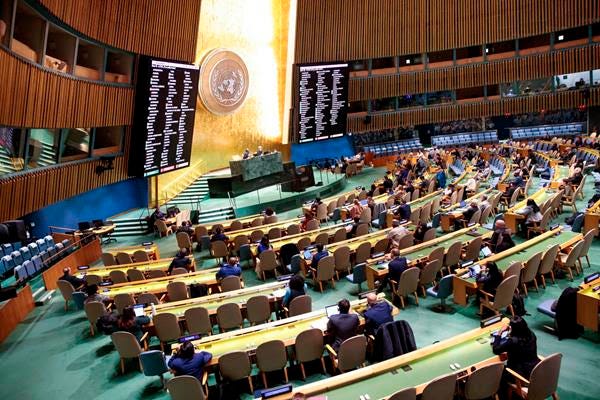

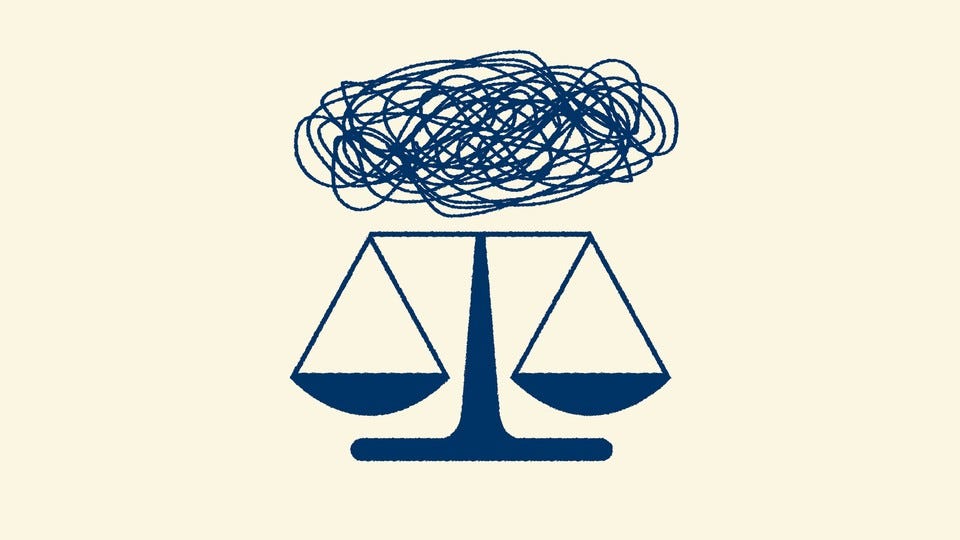


Great analysis. Much more insightful than anything you'll see in the American media or the Economist.
Thank you for the best synopsis and analysis of Syria's fall, and future implications.